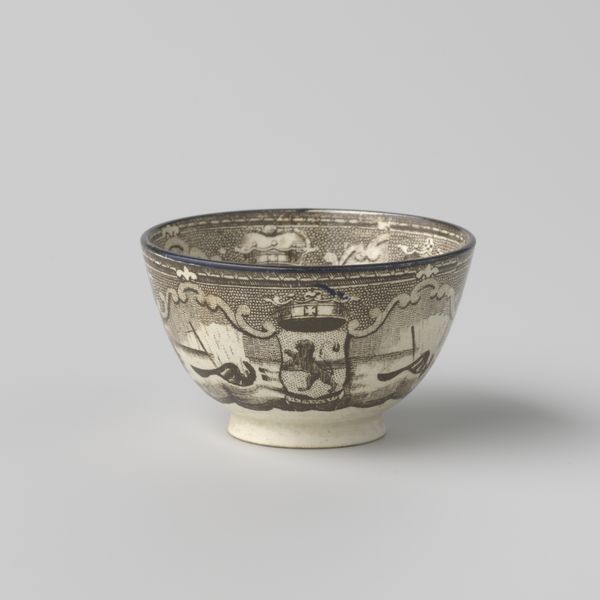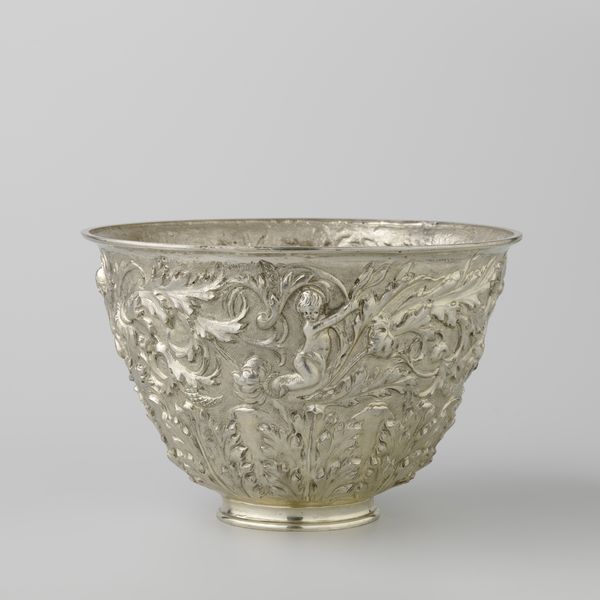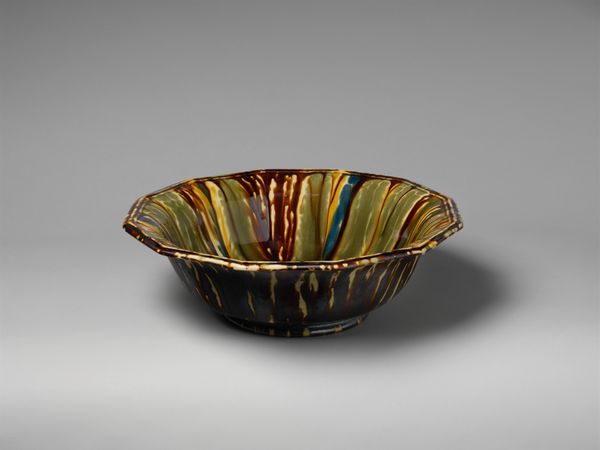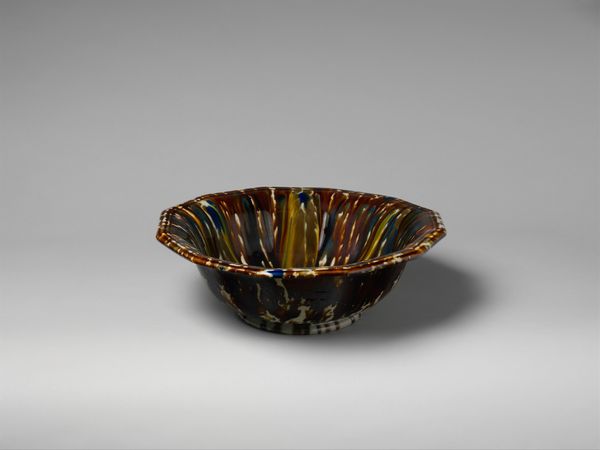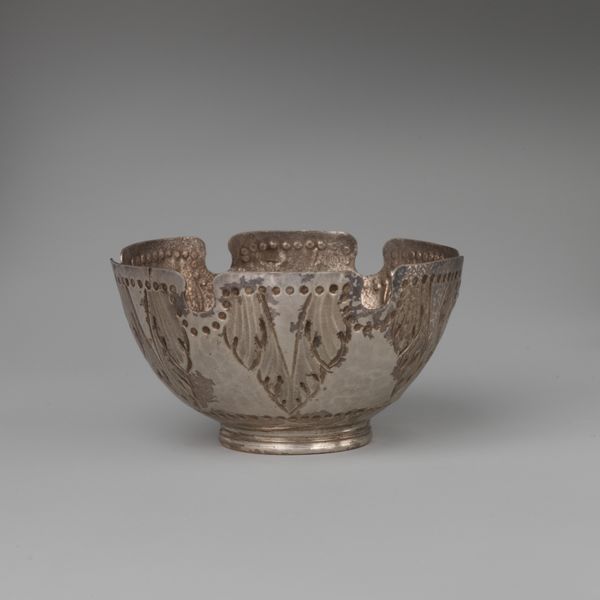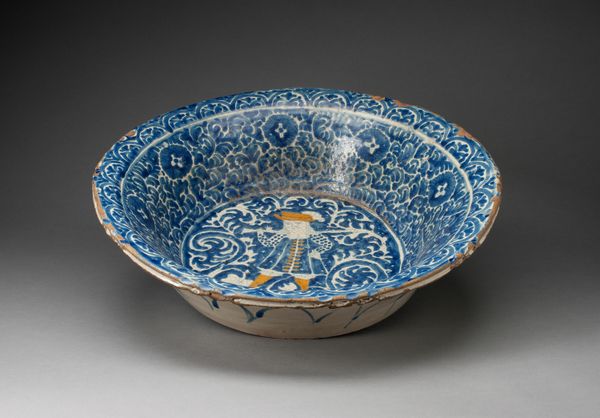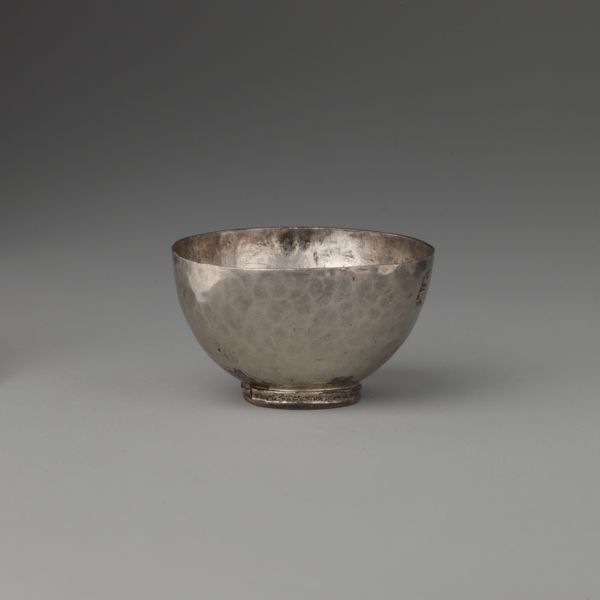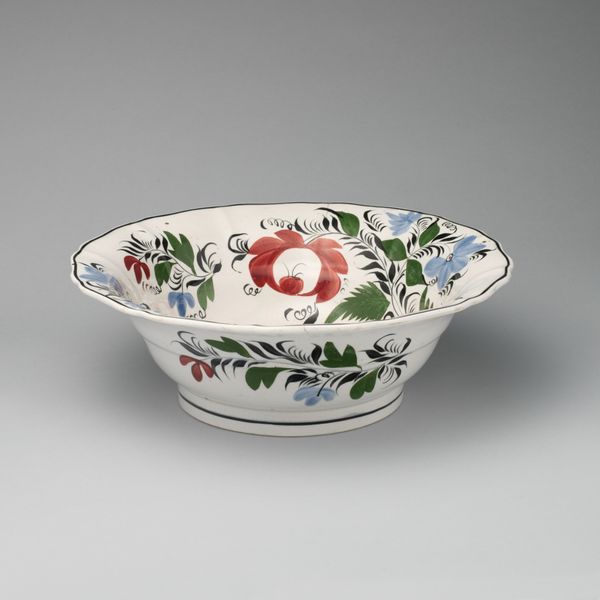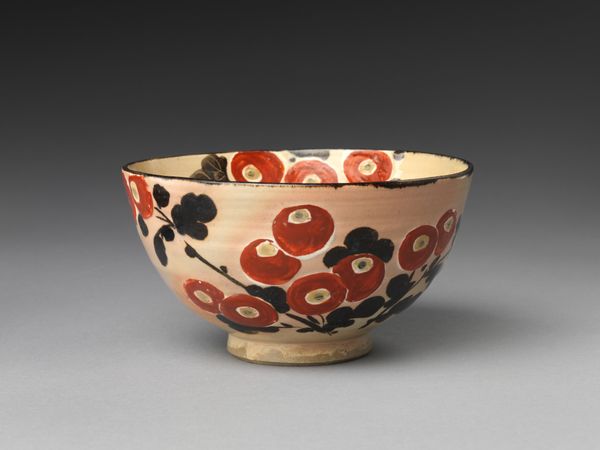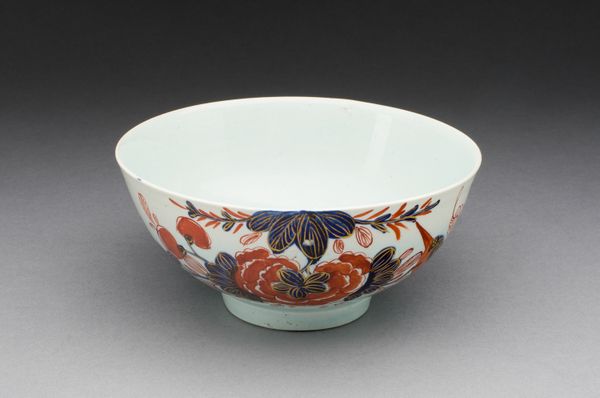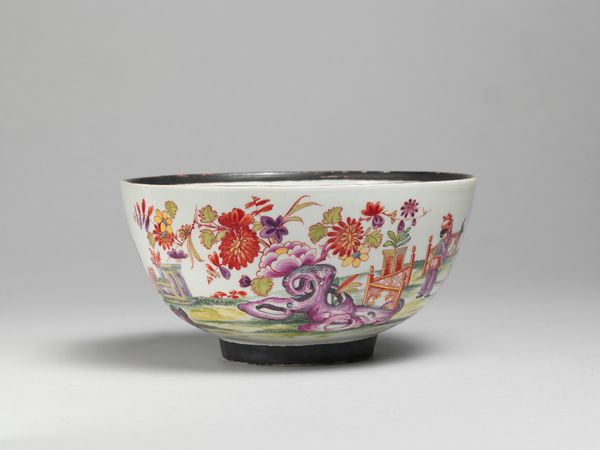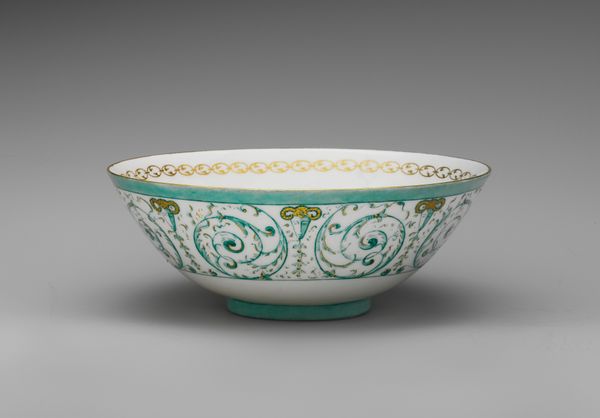
ceramic
#
ceramic
#
geometric
#
islamic-art
#
decorative-art
Dimensions: 3 1/2 x 8 1/4 in. (8.89 x 20.96 cm)
Copyright: Public Domain
Curator: Here we have a ceramic bowl, known as "Bowl with 'Willow-tendril' motif," dating back to roughly 1200-1220. The piece resides here at the Minneapolis Institute of Art. Editor: The contrast is immediately striking. Stark black designs leap from the creamy surface, though they don’t quite feel harmonious. The geometric elements are bold, but they don't seem to complement the vegetal motifs. Curator: Indeed, that tension might reflect the diverse artisanal practices present in Islamic ceramics during that era. We're looking at a period of extensive trade routes and cross-cultural exchange. The labor behind crafting these objects reveals a society connected by far-reaching trade. Editor: I’m drawn to the composition, regardless. How do you interpret the relationship between the interior design and the exterior stripes? Do they signify separate functions? Curator: Well, consider how the form dictates the design. The radiating lines emphasize the bowl’s depth and function, guiding the eye inward, a reflection perhaps of its utilitarian purpose linked to serving and sustenance. The 'Willow-tendril' motif on the other hand could speak to an aesthetic sensibility that valued nature but filtered it through a decorative lens for visual consumption. Editor: But observe the way the painterly details of the tendrils contrast with the mechanical rigidity of those radiating lines. It begs the question, doesn't it: What are the visual codes embedded there and how do they construct meaning within Islamic decorative art? Curator: It speaks to an interesting duality doesn't it? Perhaps a blend of spiritual and earthly ideals through form and utility, which is in line with art during that period and place. Editor: Thinking of the material reality is just so informative. Examining those fissures on the surface tells a story of age and use. It's this very imperfection that anchors it in the real world. Curator: Ultimately, both material production and close formal reading expand the art object beyond the visual field and allow us to more fully consider the nuances of its original context. Editor: Absolutely. Whether decoding its visual vocabulary or dissecting the process of its creation, this bowl offers rich layers of inquiry.
Comments
minneapolisinstituteofart almost 2 years ago
⋮
Numerous bowls decorated with radiating bands filled with Persian inscriptions similar to this one have been linked by excavation to the Kashan workshops. Most examples are painted with blue or black under either a clear or turquoise-blue glaze. The dated examples of this type fall between CE 1204 and 1215.
Join the conversation
Join millions of artists and users on Artera today and experience the ultimate creative platform.
